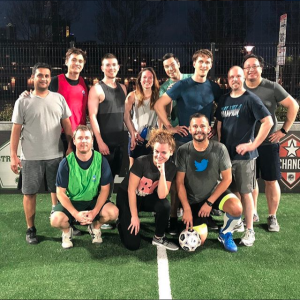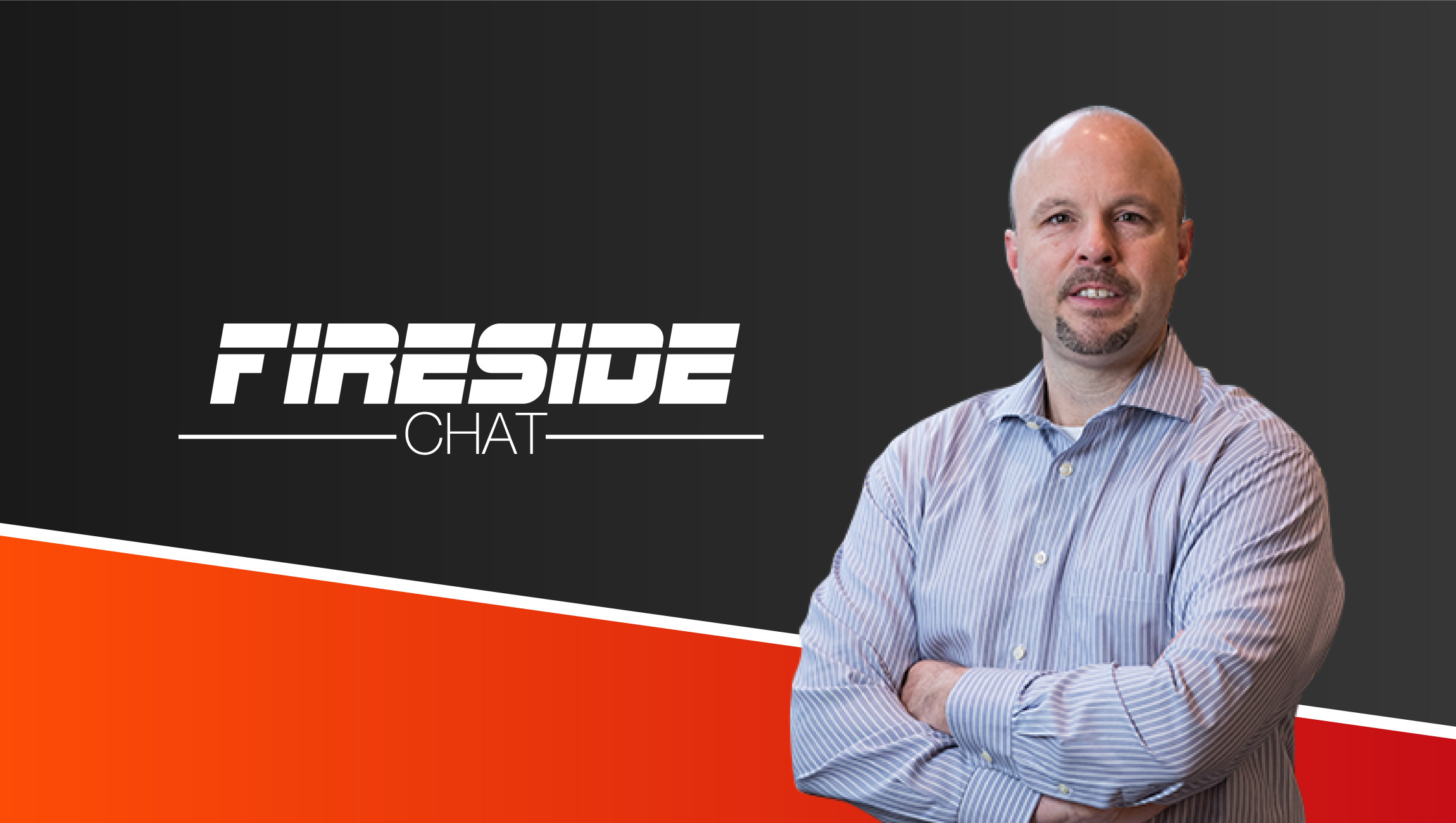Bill Walker talks about his role in The Unison Home Ownership Investors, and their sales and marketing approaches.
Know My Team
Tell us about your role at Unison Home Ownership Investors and how you got here.
As the Chief Revenue Officer at Unison Home Ownership Investors, I am responsible for cultivating and building out new and existing marketing channels and supporting the onboarding and servicing of new clients.
Prior to joining Unison, I was Vice President of Customer Experience at Prosper Marketplace where I had the opportunity to grow origination volumes from $10 million/month to $400 million/month along with the overall company portfolio to $4.5 billion. I have over 20 years of marketing and operations experience in the financial services space and have held executive roles at Barclaycard and MBNA (acquired by Bank of America).
As a real estate investor, I see a tremendous need for Unison’s products as being completely new to residential real estate finance and as an entrepreneur, at heart, I relished the opportunity to build from a nearly blank slate from a customer acquisition and operations standpoint. Unison had the need to reinvent the customer experience along with affording me the opportunity to build new acquisition channels, improve existing direct response channels, sales operations and rapidly grow the business.
As a CRO in a heavily tech-loaded ecosystem, what draws you to explore more about martech?
Unison has an incredibly diverse pool of client personas, from the first-time Millennial homebuyer to the retiree needing some extra cash to pay for life’s expenses. This kind of diversity calls for an omnichannel approach to engage with clients wherever and however they shop. To create a seamless and responsive customer experience, understanding and fully accounting for the end-user and their requirements is pivotal in implementing new marketing tools and technology to ultimately grow the business.
How tech-savvy is your marketing, sales and branding teams? How do you rate them on a scale of 1-10?
Our teams utilize a number of “off-the-shelf” technology tools (Encompass, Salesforce, Five9, etc.), custom data integrations (bureau, income validation tools, proprietary investment management database) and a custom-built user experience. Our teams are fairly tech-savvy, but there will always be challenges and opportunities to learn. Bringing together the diversity, breadth, and scope of solutions to create a seamless and responsive experience is a consistent challenge for multiple teams within our organization to navigate.

How do you think young sales professionals should train themselves to master martech skills?
When approaching marketing technology, today’s young sales and marketing professionals need to learn to —
- Be ever-more concise in a marketplace with numerous options and distractions coupled with shrinking attention spans
- Implement true enterprise-wide Voice of the Customer (VoC) as consumer expectations get higher by the day
- Integrate data into the experience to remove friction, avoiding the temptation of solving problems by throwing FTEs (Full Time Equivalent) at processes that require technology to scale properly
How do you collaborate with your CMO and CTO to manage long marketing and sales campaigns?
My team approaches marketing and sales campaigns by finding new ways to differentiate the direct response, campaign-driven demand generation, the onboarding experience and conversion optimization from brand-building and the brand voice — though there is clearly a synergy among those efforts. Brand awareness and the brand voice are not necessarily activities that fall under “top of the funnel” demand generation.
However, when done well, they will significantly enhance the effectiveness of direct response campaign efforts. Brand activities provide air cover for everything else we do. We continue to spend a lot of time on R&D for new channels, messaging and product refinements, in addition to partnerships and other initiatives that can fuel the next stages of growth.
Given the number of technology resource asks around our fast-growing organization, prioritization conversations require broad representation. This extends beyond the CMO and CTO and includes folks from operations, legal and compliance, marketing, engineering and collaboration across the technology organization. Within the technology organization, we have a Head of Product and a Head of Engineering, both crossing the divide between marketing and technology. They happen to speak both languages, which is great for us.
B2B Marketing Strategy
What is your “Voice of the Customer” program?
The VoC program leverages customer feedback, which is key to understanding if we are delivering a consistent experience that meets our customers’ expectations. A robust VoC program needs to leverage data sources that are as diverse as the channels being used to market, including email surveys, phone surveys, customer listening, agent focus groups, along with the dynamic feedback and conversion analysis that accompanies rigorous A/B testing at key points in the customer onboarding funnel. This information is used to identify and prioritize technology, operations, and product enhancements.
How do you identify the ‘generational gap’ among the marketing technologies? What next-gen technologies are you keenly following?
The generational gap is not necessarily with marketing technologies, but with the different client personas and how businesses reach each of these audiences. It is important to meet our customers where they are and using the communication channels they are most comfortable with.
Unison’s client personas are extraordinarily diverse, ranging from the first-time Millennial home buyer to the move-up homebuyer to the retiree needing a reverse mortgage. A diversity of this nature requires alignment with the types of marketing and communication technologies that each of these audiences expects and is comfortable using.

We created a truly omnichannel approach that engages our clients wherever and however they shop, whether it be online, by phone or even by paper-file processing. We are using Salesforce and Five9, along with a number of plugins for both; including chat, lead-scoring, credit bureau APIs and proprietary technologies to ensure that we can meet our clients’ needs.
Are modern marketing technologies pushing the boundaries of present-day brand engagement and customer experience? How often do you measure the performance of your marketing analytics and sales reporting?
Modern marketing technologies are improving brand engagement and helping to optimize the customer experience. We’re a program that doesn’t look like the programs that our clients may be familiar with – because we are not debt. For example, they know what a mortgage is, they know what a credit card is but they don’t know what an equity investment is or how it works. They don’t realize how easy it can be to enter into a home-ownership investment with us or all the ways that we can help them enjoy a better ownership experience with significantly increased financial flexibility.
As a result, we want our customers to be completely educated on how we’re different than the financing options they’ve considered or used in the past. We want that information to be readily available. We want to give them as much information as they need, and we want to make sure they understand it before entering into a partnership with Unison. At the same time, we don’t want to be heavy-handed and have people jump through a lot of unnecessary hoops between engaging with us and getting to the finish line.
Customer experience creates an important feedback loop for everything else that we do in terms of demand generation, onboarding and managing the customer relationship after they originate. Understanding our customers helps us determine how we can give them the information they want, via the channels they want, when they want it and the amount that they want it in — all without beating them to death with it or making it hard to do business with us.
We measure the performance of our marketing programs and success by looking at response rates, CAC, Net Promoter Scores (NPS) and a variety of other metrics depending upon the marketing channel. From a growth standpoint, we’ve doubled each quarter, quarter over quarter, throughout 2017 and the expectation is we’ll grow another 6x in 2018. Unison’s Voice of the Customer program is an integral part of the feedback loop by which we measure our success.
What are the dynamic elements driving your B2B customer engagement model? How do you execute Engagement Economy vision, Strategy, Product and Corporate development at Unison Home Ownership Investors?
Unison HomeBuyer, and to a lesser extent, Unison HomeOwner, have a number of B2B audiences who are part of the residential real estate finance ecosystem and have varying motivations to engage with us.
We are continually evaluating how we can add value to loan officers, real estate agents, title companies and others who play a key role in closing transactions. Each party in a successful transaction has different motivations, pain points and needs when it comes to growing their business and we are continually testing and seeking feedback as to how Unison can be a resource in helping our business partners grow alongside us.
Testing can run the gamut from providing useful content, communication channels and even new partnerships we can pursue to help our existing partners offer a better experience for their customers.
What are the tools and strategies you use to create a seamless customer experience at Unison Home Ownership Investors? Could you provide us a sneak peek into your MarTech acceleration strategies?
Before implementing tools and creating content, we had to articulate a clear path for the evolution of the online experience, what each iterative chunk of work would be and how much further the online experience would go. There was an incredible buy-in and excitement for the project, which enabled me to go out to a few trusted agency partners and build a low-touch skeleton site that served as a reasonable landing place for people responding to our digital and DM efforts — without committing millions of dollars and tons of internal resources to the effort.
We put a proof of concept out there, showed the wins, optimized, showed more wins, to the point where roughly halfway through the year, it was obvious that it was working — that it was providing the feedback loop we hoped for. From there, we were able to use more and more internal company resources to build out the content, web experience and marketing channels.
With the overall onboarding experience for our customers significantly improved, we are now spending a lot of time developing tools and content for potential Unison HomeBuyer customers who are not yet under contract to purchase a home. The content needs for this audience are more challenging to discern as they could be anywhere from two days to two years from closing their transaction and we want to provide quality information to help make the home buying process easier, however far along they may be.
Which types of content (web and social) you create in a day, week, month, and a quarter?
Out of all marketing collateral, including the whitepaper, brochures, e-book, playbook, case studies, webinar, research reports, and infographics, which resonates the most with your customers?
Given that the category of homeownership investments did not exist previously, there is a heightened need to provide easy-to-access resources that speak to our credibility, ease of use and fairness. The types of content we have found to resonate the most with our customers include top-tier media coverage, testimonials, product evaluations and respected lender partnerships.
From an industry perspective, we have had a ton of interest in our – now annual – Home Affordability Report, homebuying surveys along with a whitepaper looking at the relationship between inflation and rapidly escalating home prices.
Customer Success and Technology Insights
From a tactical standpoint, how often does your organization revisit the automation stack?
It is an all-encompassing activity to implement significant changes to the automation stack and should not be taken lightly, however, near-continuous evaluation of current tools versus alternatives is imperative. As we speak, we are just concluding implementation of Marketo and are refining the testing agenda for the next several months.
How does the technology involved impact your customer building/partnership model?
We have APIs that access our proprietary investment management database along with the credit bureaus to determine if, based on the address entered, we can make an investment. This allows us to get back to the consumer with more solid, actionable information. We’re either generation five or six of our digital storefront and continue to streamline the experience and add new functionalities.
We are continually seeking feedback from customers, partners and customer contact personnel to drive change and have prioritized adding automation to key portions of our underwriting process this year. We want to use external data sources, wherever possible, to validate prospective clients’ information and make it less cumbersome for them to provide needed documents.
How do you see the technology you use impact the customer acquisition and success rate?
Our elongated sales cycle consist of 12 to 15+ touchpoints and requires us to understand all channels and resources our clients are using to come to a buying decision. The technologies we use, including Google Analytics, HEAP, VoC (Voice of the Customer) and a number of other web analytics tools help us gain a more in-depth understanding of our clients’ journey to ensure that we are providing as much information as needed, when it is needed, to help improve conversion from initial inquiry to Unison customer.
Do you see sales and marketing technologies unifying or evolving together to deliver higher ROI?
The trend of technology and experience integration continues to accelerate as both the customer and the marketer expect all systems/tools to have a complete picture of the customer journey. This joint evolution offers companies the opportunity to continually deliver an experience that is customized to the nuance of each customer’s unique situation. The challenge that marketers need to meet is providing the individualized experience that today’s consumers expect and the reward for meeting this expectation is increased conversion and a better ROI.
What is that one piece of advice you received that you would like to pass on to the MarTech industry?
Good news from your customers feel better, but a bad news makes you better.




Comments are closed.